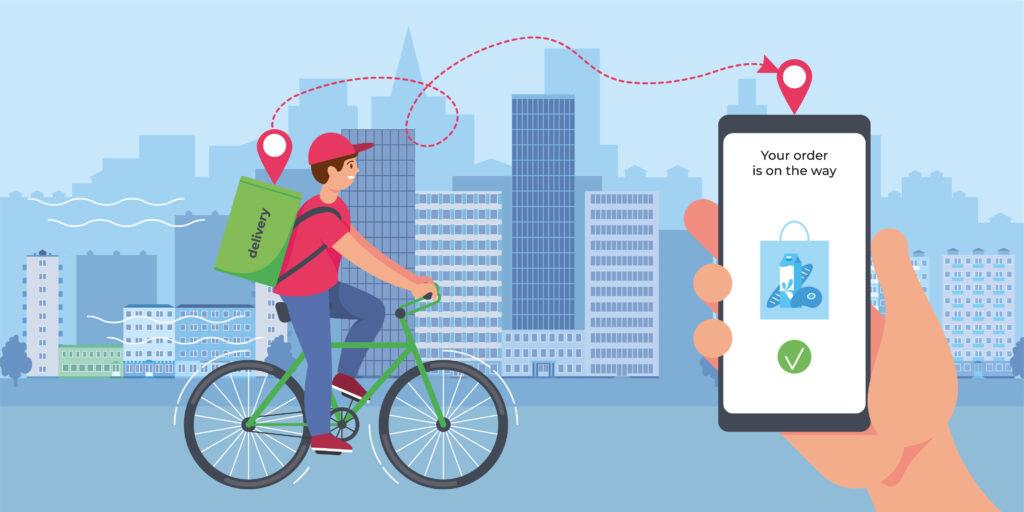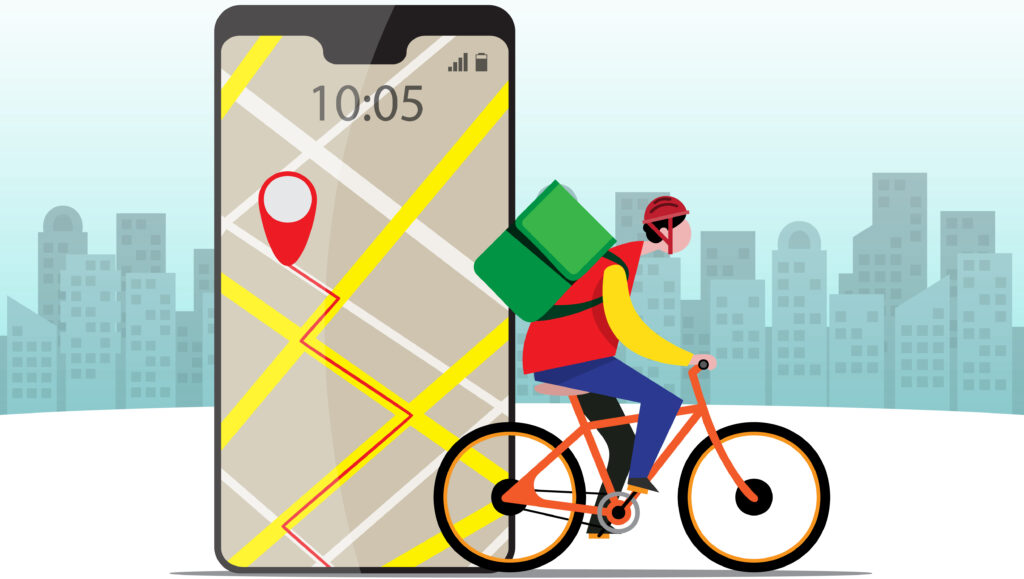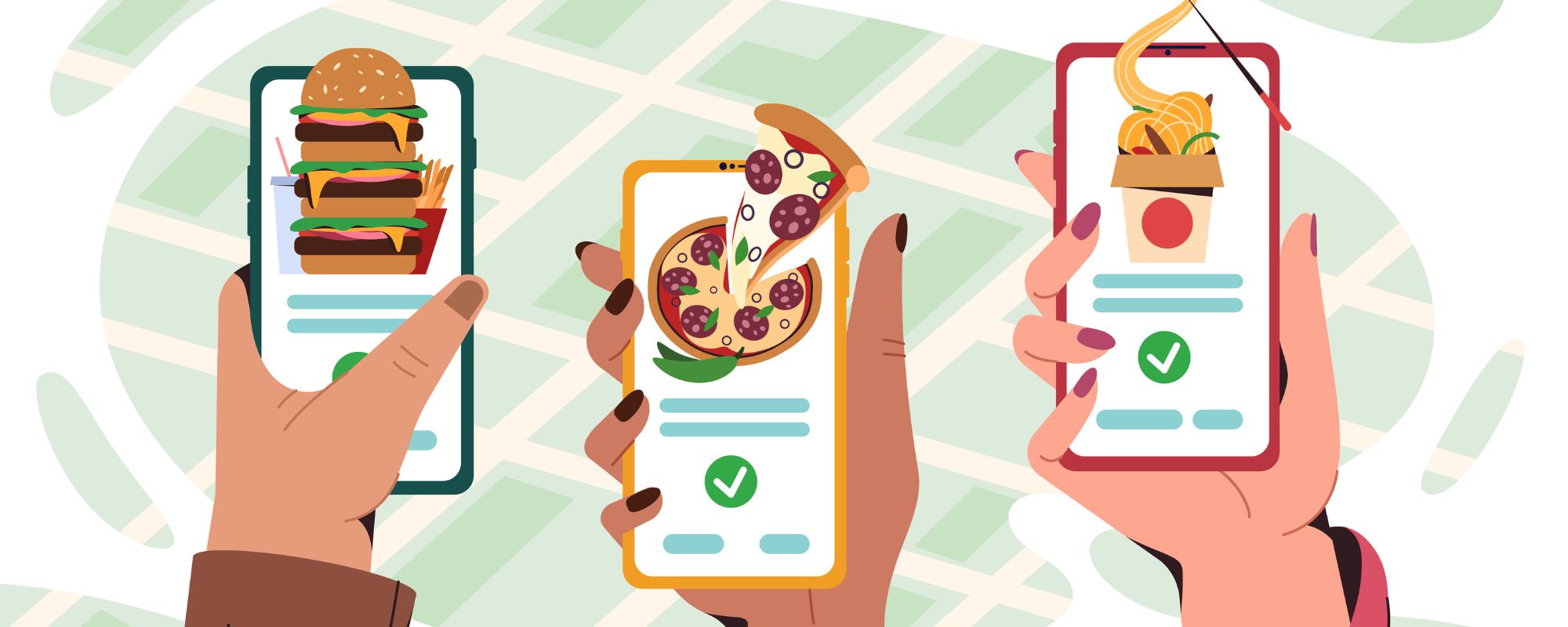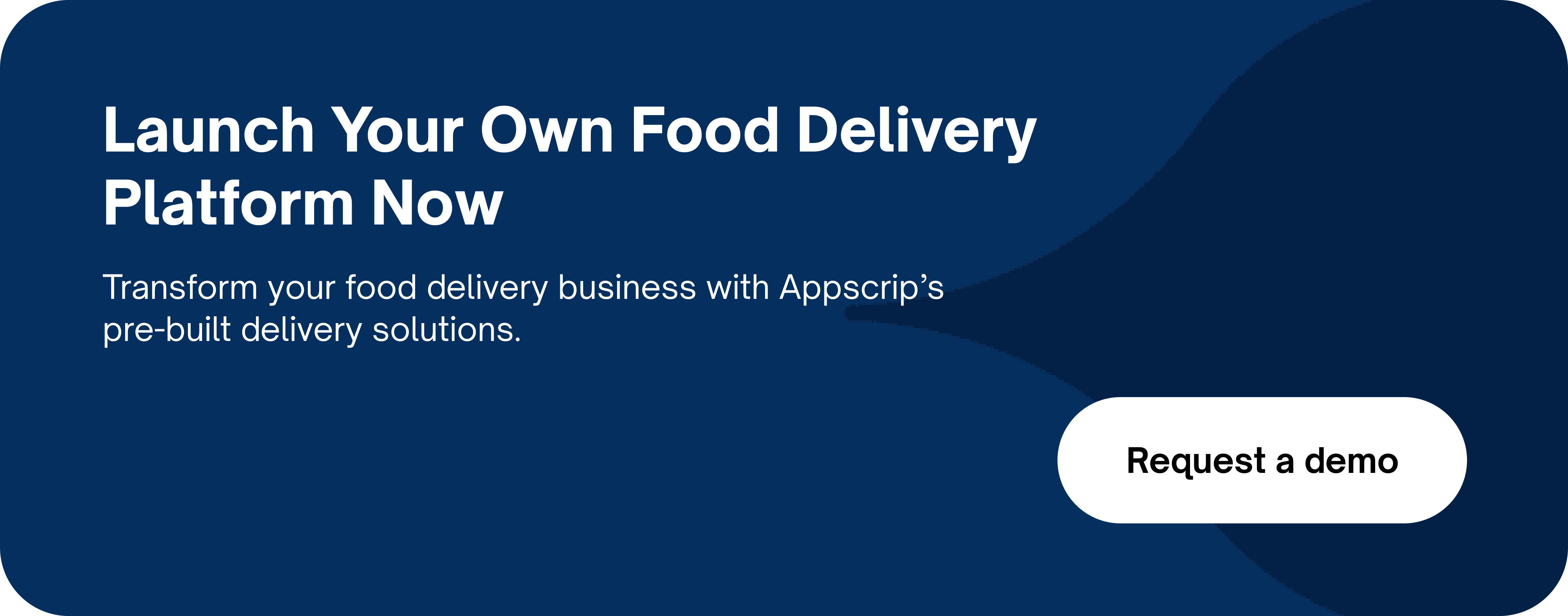Most of us would have taken the liberty of utilizing online food delivery services to order food at least once. The reasons could be varied, as in, to enjoy a comfy meal sitting right at home or use the opportunity to get your favorite food, right where you are.
The demand for food delivery apps is on the rise, kick-started by the COVID-19 pandemic. Several online food delivery services like GrubHub, Deliveroo, and UberEats, grew in usage and revenue generation as people accepted this convenience.
Several types of companies and entrepreneurs inspired by these food delivery solutions began launching similar apps. We introduce you here one such option – a GrubHub clone app.
You can think of a GrubHub clone app that delivers food, much like GrubHub, except it bears your business name instead. It mimics the original app’s design and functionality to help your company succeed. It offers real-time delivery, a user-friendly interface, and restaurant menus.
Features to be included in the Grubhub Clone App
Based on your interest in building an app similar to GrubHub, we will go over the steps involved and the features that should be included in this blog.
These are some of the features that should be included in a Grubhub clone app.
Restaurant Owner Features
Menu Management: A restaurant’s menu card can be edited by adding, removing, or changing food items. Special menu items can also have their own section.
Managing Orders: When customers place an order, restaurant owners have the option to accept or deny it. Customers can also see and follow the status of their orders. They can mark food orders as pending, preparing, and ready for pickup.
Promotions and Marketing: With this function, restaurant owners may create promotional campaigns such as discount vouchers, loyalty programs, and incentives.
Feedback from Users: The app allows restaurant owners to see and reply to user reviews, which can help enhance user loyalty.
Analytics: Orders, income, and customer satisfaction ratings are just a few of the business metrics that restaurant owners can see.
Payments: This feature lets the restaurant owner receive payment. The revenue earned by the restaurant can be tracked via the dashboard and payments can be transferred to a bank account easily.
Order History: Allows owners to view past orders with the order number, order type, the amount paid by the customer, the amount taken by the app and driver, and the profit of the restaurant from the order.

Driver Features
Real-Time Navigation: The app aids delivery partners in finding the delivery spot quickly so that food items are delivered on time. The driver needs to provide proof of pickup and proof of delivery to ensure transparency.
Chat in Real-Time: The app has a chat function that lets users communicate with drivers in real time.
Order Assignment: Drivers are able to see details regarding the order request, which they can accept or reject. The order details consist of the Order ID, Delivery Address, Restaurant Address, Delivery Fee, and the type of food.
Earnings History: It allows delivery staff to view their earnings history.
Tips: By accepting tips from users via the app, it allows them to enhance their earnings.
Payments: The app handles payment for delivery partners, so they don’t have to worry about other methods of receiving the payment.
User Features
Browsing the Menu: People can look at restaurant menus and find out highlighted dishes, discounts and offers on specific food items, etc.
Ordering: Customers will be able to order by choosing food items from the menus. They will also have options to reorder the last food item or one from their favorite list.
Customer Payment Options: UPI, PayPal, Net Banking, and Credit/Debit Cards are available for payment.
Order Status: With the help of delivery status with real-time driver tracking and live chat support, users may monitor the status of their orders in real-time.
Customization: Users can set their own preferences for dishes and then filter the food items including veg or non-veg, and other specific dietary requirements.
Review & Rating: Customers can rate the restaurant based on their experience with the food, the delivery service, and the overall quality.
Chat and Call: Customers can call and talk to service and restaurant partners about any doubts regarding delivery or quality of food.
Admin Features
Administration: The app lets admins handle restaurants by adding and removing restaurants and changing menus.
Feedback from Customers: Administrators can address customer complaints, order problems, and delivery issues in response to feedback.
Delivery Partner Management: This lets administrators track the status of the delivery partners in real-time and add, remove, or change delivery partners.
Dashboard: Here admins can view all the metrics: sales, top-rated food items, number of restaurants, revenue, etc. These can be filtered according to date & time.
Invoice Generation: Administrators will be able to generate invoices for both individual restaurants and overall sales using the “Generate Invoice” feature.
Smart Dispatch: This feature enables the app admin to efficiently create shifts and assign orders based on the most efficient route. The model generates delivery routes using our proprietary software code that makes use of open-source technology by factoring in shift duration, capacity, order size, pickup, and delivery points.
Payment Gateway Management: Define and manage a number of different payment gateways, as well as the transaction fees that are charged by each of them independently. A flat rate or a percentage of the order total could constitute the transaction fee.
Commissions: As is typical in the e-commerce industry, the app can also establish a commission rate per product and store. And they can set and change the app’s commission for each active store. A commission could be set at a flat rate or calculated as a percentage of the order amount.
Grubhub Clone App Development Process
A GrubHub clone app development project is both an interesting and demanding venture. Here are some important steps you’ll need if you want to make your own app.
Market Research
Conducting a market search is an essential first step before beginning development. Gather information on your competitors, including their pricing, features, and other offerings, at this stage. Use the data you’ve gathered to formulate an effective strategy for your business and find a workable answer to an issue.
Design
This step involves developing a prototype of your business concept into a full-fledged design. Colors, typefaces, number of sections, listing structure, categories, branding, and user interface view are all determined. Accessibility and the potential complexity of an app’s user interface are also addressed in this stage.
Development
It takes a mix of backend and frontend technologies to build an effective GrubHub clone app. For the backend, think about Node.js or Ruby on Rails.
Use frameworks such as React Native or Flutter to build the front end. This is really important if you want more people to download your app.
Testing
Testing is an essential part of creating a GrubHub clone app. Thorough testing across all phases of development is necessary to guarantee that the app operates without a hitch.
Deployment
At least, we can talk about the final stage, which is deployment. When your GrubHub clone app has passed all of your tests, you can release it to the public. You may distribute it worldwide on the App Store or Google Play Store. Be careful to adhere to all of their submission rules and standards.
Having a strong infrastructure in place is crucial to guarantee a seamless deployment process. For dependable and scalable hosting, choose a cloud-based solution such as Microsoft Azure or Amazon Web Services (AWS).

How to Make Money with Grubhub Clone App
Here are some ways in which you can earn a significant amount of revenue with a Grubhub clone app.
Order-Based Commission: This is the simplest approach for food delivery applications to generate revenue. Each time an order is successfully placed using the app, the app charges a part of the transaction amount. The amount that will be deducted from the total payment can be adjusted between a 10% to 20% range.
Membership Fee: For a specific price, you may provide your customers access to premium features like scheduled delivery, first-class delivery, and a badge that says “top customer” in your app.
Promoted Content Within an App: Making money by displaying adverts for other businesses and organizations is another option. You will earn a commission for every click and view that goes through.
Freemium Model: Using this strategy, you can provide limited-time access to premium services at no cost. Following the completion of a free trial, users are required to pay in order to enjoy those services once more.
Conclusion
Effective planning, technology selection, testing, and deployment are the four cornerstones of developing a GrubHub clone app. By opting for a Grubhub clone script, entrepreneurs can save valuable time and resources that would otherwise be spent on complex app development. With its ready-to-launch solution, Appscrip offers a hassle-free way to enter the food delivery market and capitalize on the growing demand.
Appscrip’s Grubhub clone script comes packed with a range of cutting-edge features, including real-time tracking, secure payment gateways, intuitive user interfaces, and seamless order management systems. These features ensure a seamless and user-friendly experience for both customers and restaurant owners.
If you’re looking to launch your own Grubhub-like app, Appscrip’s Grubhub clone script is the perfect choice. Don’t miss out on this opportunity to revolutionize the food delivery industry. Get in touch with Appscrip today and embark on your journey to success.










